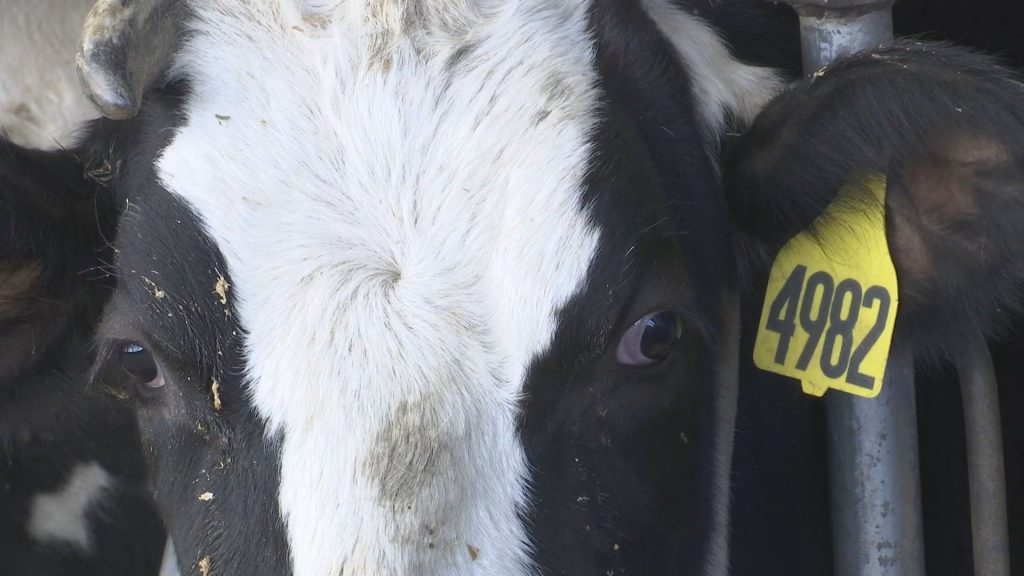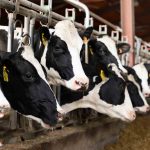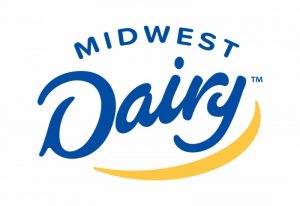
The Agriculture Department announced the April Federal order Class III benchmark milk price at $15.50 per hundredweight (cwt.), down 84 cents from March and $3.02 below April 2023, brought down by falling prices in cheese, nonfat dry milk and whey. The four-month Class III average stands at $15.77, down from $18.46 at this time a year ago and $22.04 in 2022.
Late Friday morning Class III futures portended a May price at $18.36, June at $19.09 and July at $19.19, with a peak of $19.28 in September.
The April Class IV price is $20.11 per cwt., up 2 cents from March, $2.16 above a year ago, and the highest Class IV since Nov. 2023. Its four-month average is at $19.86, down from $18.80 a year ago and $24.31 in 2022.
CME butter and cheese prices continued to strengthen. Like a beach ball held under water, butter popped above $3 Wednesday and closed Friday at $3.0750 per pound, highest since Nov. 3, 2023, 10.50 cents higher on the week, and 63 cents above a year ago. The record high is $3.5025 on Oct. 6, 2023. There were 43 trades on the week and 90 for the month of April, up from 53 in March.
“Bulls continue to lead the charge on butter markets,” says Dairy Market News (DMN), which credited the moderate increases in year-over-year and monthly stocks in the March Cold Storage data. But cream availability remains wide open. Central butter makers continue to say both regional and cream sourced from the West are holding in similar pricing patterns to recent weeks, at multiples below 1.20.
Western butter output is also strong as cream availability is “comfortable.” Some butter makers are securing additional loads for churning to build stocks for anticipated third and fourth quarter demand. Domestic demand is steady for salted butter and stronger for unsalted, though export demand is moderate.
Contacts at the ADPI annual meeting this week in Chicago were mostly bullish on butter, says DMN. StoneX stated in its May 2 Early Morning Update; “There was a modest change in perceptions of the (cheese) markets’ potential. As the bearish demand story we’ve dealt with all year subsides slightly, concerns around available milk supplies found a way into more conversations. Ultimately, this dynamic can best be characterized as skepticism around price strength.”
Block cheddar saw its Friday finish at $1.79 per pound, up 4 cents on the week, sixth week of gain, highest since Oct. 19, 2023, and 17.75 cents above a year ago. The barrels finished 10.75 cents higher at $1.88, 35 cents above a year ago. Sales totaled 2 cars of block on the week and 113 for April, up from 83 in March. Barrels totaled 9 for the week and 82 for the month, up from 62 in March.
Cheese demand continues to strengthen, according to Midwest cheesemakers who are beginning to turn away customers and tell current customers that requests for extra volumes will not be possible. Barrel makers say any extra is spoken for. Production is somewhat steady in the region however, as more processing comes online. Milk availability has begun to tighten and last week’s low spot price of $5-under Class III had yet to be reported at mid-week.
Cheese production also remains strong in the West. Milk is ample but may soon tighten. Stocks remain comfortably available. Demand from domestic purchasers is stronger and is steady from international buyers, according to DMN.
Grade A nonfat dry milk closed Friday at $1.13 per pound, up 2 cents on the week, but 6.75 cents below a year ago. Sales totaled 12 on the week and 49 for April, one more than the month before.
Dry whey saw its Friday close at 39.50 cents per pound, 1.25 cents higher and 6.75 cents above a year ago. There were 11 sales on the week and 66 for April, highest monthly total since Oct. 2023’s 195, and up from 8 in March.
March U.S. dairy exports took a hit following an increase in February. Sailings totaled 527 million pounds valued at about $740 million, down 4.5% in volume and down 9.2% value, according to the May 2 Daily Dairy Report.
HighGround Dairy (HGD) economist Betty Berning reported in the May 8 Dairy Radio Now broadcast this was the smallest March total since 2020. Volumes to the top three markets dropped significantly, down 22% to Mexico, down 27% to China and 4.9% less to Japan. But exports to Canada and South Korea saw notable increases of 27% and 74% respectively, and exports to Southeast Asia grew for a second month, up 4%.
Nonfat dry milk exports tumbled 18.4% as shipments to Mexico were down 37%. Nonfat dry milk is “languishing,” says Berning, “As there’s not a lot of demand out there and prices have traded in a tight band since January 2023.”
Dry whey exports were down 22.3%, as China continues to restrain purchases. Butter exports were down 42.4%, no surprise there considering U.S. prices.
The bright spot was record cheese exports, with 110.3 million pounds leaving our shores, up 20.5% from March 2023. Berning said that March bested the previous record set in June 2022, thanks to increased sales to Mexico, South Korea, and Japan. Cheddar exports were up 24.7%, as lower U.S. prices in fall 2023 persisted into 2024.
Back on the farm, a higher All Milk price and lower soybean and hay prices nudged the March milk feed price ratio higher for a second month. The latest Ag Prices report shows the ratio at 2.17, up from 2.13 in February, and compares to 1.55 in March 2023.
The All Milk price averaged $20.70 per cwt., with a 4.28% butterfat test, up a dime from February, but 30 cents below March 2023, which had a 4.19% test. California’s average at $20.20 per cwt., was unchanged from February, but 10 cents below a year ago. Wisconsin’s, at $19.10, was up a dime from February but $1.60 below a year ago.
The national corn price averaged $4.36 per bushel, unchanged from February, but $2.31 below a year ago. Soybeans averaged $11.80 per bushel, down a dime from February, and $3.10 per bushel below a year ago. Alfalfa hay slipped to $195 per ton, down $5 per ton from February and $71 below a year ago.
Looking at the cow side of the ledger; the February average cull price for beef and dairy combined jumped to $119 per cwt., up $10 from February, $23.30 above March 2023, and $47.40 above the 2011 base average.
Quarterly milk cow replacements averaged $2,120 per head in April, up $230 from January, and $400 above April 2023. Cows averaged $1900 in California, up $150 from January, and $245 above a year ago. Wisconsin’s at $2,380 per head, was up $320 from January and $540 per head above April 2023.
Milk production margins moved above $11 per cwt. for the first time since Nov. 2023 and were 22 cents per cwt. above February, according to dairy economist Bill Brooks, of Stoneheart Consulting in Dearborn, Missouri.
“Income over feed costs in March were above the $8 per cwt. level needed for steady to higher milk production for the seventh month in a row,” writes Brooks. “Input prices were mostly lower, but all three input commodities remained in the top nine for March all time. Feed costs were the eighth highest ever for the month of March and the eighty-second highest of all time. The ratio was also above the 5-year average for the second month in a row,” according to Brooks.
He also stated that “Higher profitability levels, along with fewer available replacement heifers expected to calve in 2024 pushed quarterly prices received for milk cows to the highest level since October 2014.”
“Dairy producer profitability for 2022 in the form of milk income over feed costs, was $11.91 per cwt.,” according to Brooks. “The profitability was $4.12 above 2021 and $2.50 higher than the 2017-21 average. In 2022, the increase in milk income over feed costs was a result of the milk price increasing more than feed prices rose. Income over feed in 2022 was above the level needed to maintain or grow milk production.”
Brooks says milk income over feed costs for 2023 came in at $8.13 per cwt. and were near the level needed to maintain or grow milk production. Profitability was down $3.78 per cwt. from 2022’s level and $1.59 lower than the 2018-22 average
“Milk income over feed costs for 2024, using April 30 CME settling futures prices for milk, corn, and soybeans plus the Stoneheart forecast for alfalfa hay, are expected to be $14.30 per cwt., a gain of $6.17 versus 2023. Income over feed in 2024 is $1.57 per cwt. higher than last month and would be above the level needed to maintain or grow milk production,” Brooks concluded.
Meanwhile, the latest Margin Watch from Chicago-based Commodity and Ingredient Hedging LLC. says “Dairy margins improved over the second half of April as a rally in milk more than offset strength in the feed markets. A continued decline in milk production is helping to support the market with strong demand for dairy products keeping a firm tone across the complex.”
The U.S. corn crop was 27% planted, as of the week ending April 26. That according to the latest Crop Progress report and was up from 12% the previous week, 4% ahead of a year ago, and 5% ahead of the five-year average. 7% emerged, 2% ahead of a year ago.18% of the soybeans were in the ground, 2% ahead of a year ago, and 8% ahead of the five-year average.
Dairy cow slaughter for the week ending April 20 totaled 55,100 head, down 5,700 or 9.4% from a year ago. Year to date, 1,055,200 have been culled, down 139,800 or 13.2% from 2023. Culling has lagged by double digits since January.
The avian-bovine influenza outbreak is a continuing challenge to the dairy industry and has been confirmed in nine states. Dairy cows moving across state lines must be tested first. The USDA is testing ground beef at retail stores in states with the outbreak and some restrictions on imports of dairy cattle from the U.S. have begun to pop up. Reuters reported that a World Health Organization official warned of the virus spreading to cows in other countries through migratory birds. At this point, there are perhaps more questions than answers but one of the best sources of information is National Milk’s website www.nmpf.org.
U.S. cheese production totaled 14.2 billion pounds in 2023, according to the USDA’s annual Dairy Products Summary, up 0.9% from 2022. The month with the biggest production was March, with 1.224 billion pounds. February had the smallest output at 1.116 billion pounds.
Wisconsin remains the leading cheese producer, at 3.5 billion pounds or 24.7% of total production. California was Number 2, with 2.49 billion pounds, and Number 3, Idaho produced 1.0 billion pounds. New Mexico, New York and Minnesota followed.
Italian varieties totaled 5.85 billion pounds, down 0.8% from 2022, and accounted for 41.2% of the cheese total in 2023. Mozzarella accounted for 78.7% of the Italian production, followed by parmesan with 8.3% and provolone at 6.4%.
Wisconsin was the leading state in Italian cheese, with 28.6% of the total. American type, at 5.84 billion pounds, was up 3.0%, and accounted for 41.1% of the cheese total. Wisconsin again was the leading State with 18.8% of the total.
Butter production totaled 2.12 billion pounds, up 2.7%. California was the leading butter producer, with 680.2 million pounds or 32.2% of the total output. Pennsylvania was a distant second with 86.9 million pounds.
Nonfat dry milk for human consumption totaled 1.87 billion pounds, down 4.4% from 2022. Skim milk powders, at 695 million pounds, were up 5.6%, and dry whey totaled 938 million pounds, up 2.5%.
The Global Dairy Trade held its 50th Pulse auction Tuesday with 3.79 million pounds of product sold, down from 3.85 million on March 23. 98.2% of the total offered was sold. There was 559,968 more pounds of instant whole milk powder (WMP) and 559,968 pounds less of regular WMP sold versus the previous week’s Pulse. 93.8% of the total SMP on offer was sold. Prices continued to slip.
Cooperatives Working Together (CWT) member cooperatives accepted 10 offers of export assistance this week that helped capture sales of 101,000 pounds of American type cheese, 150,000 pounds of anhydrous milkfat, 66,000 pounds of whole milk powder and 604,000 pounds of cream cheese.
The product is going to customers in Asia, Central America, the Caribbean, Middle East-North Africa and South America through July and raised CWT’s 2024 sales to 37.8 million pounds of American type cheeses, 309,000 pounds of butter, 767,000 pounds of anhydrous milkfat, 8.5 million pounds of whole milk powder and 3.9 million pounds of cream cheese. The products are going to 27 countries and the equivalent of 469.1 million pounds of milk on a milkfat basis.
Milk output is steady to stronger throughout the East and much of the West, according to DMN’s weekly update, though contacts in the mountain states of Idaho, Utah, and Colorado say production varies from slightly weaker to strengthening. Midwest contacts report milk component levels are somewhat enriched currently.
Looking down under, DMN reports that March New Zealand milk output was down on a tonnage basis. “An analyst group in the country stated March output in New Zealand was the weakest since 2020 in terms of milk solids and on a tonnage basis. El Niño contributed to drier than normal weather conditions in the country and many farmers experienced drought-like conditions as well as irrigation restrictions due to low water table levels,” according to DMN.
Lee Mielke is a graduate of Brown Institute in Minneapolis, Minnesota. He’s formerly the voice of the radio show “DairyLine” and his column appears in agricultural papers across the U.S. Contact him at lkmielke@juno.com.
You can now read the most important #news on #eDairyNews #Whatsapp channels!!!
🇺🇸 eDairy News INGLÊS: https://whatsapp.com/channel/0029VaKsjzGDTkJyIN6hcP1K























